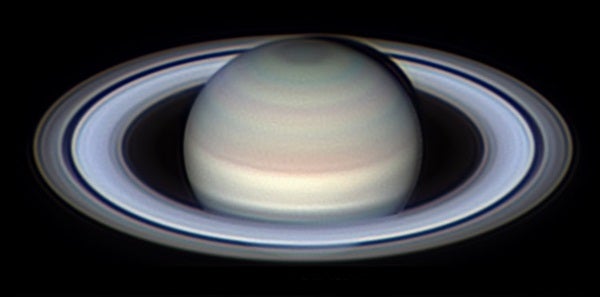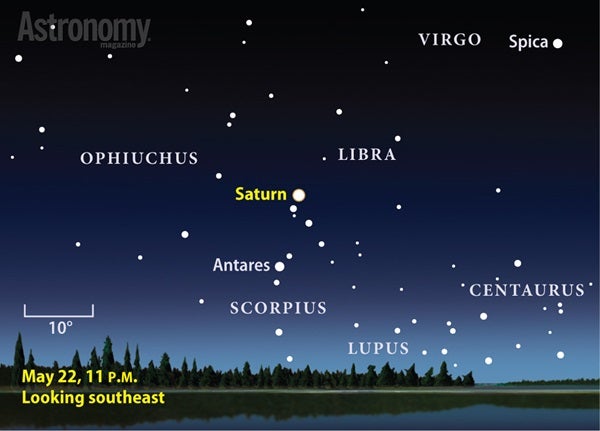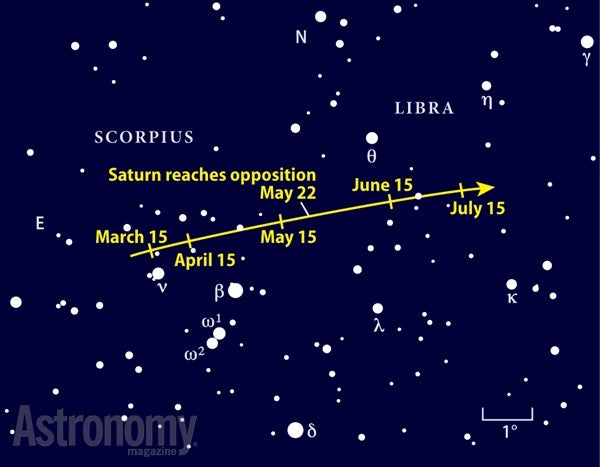Saturn spends 2015 among the background stars of northern Scorpius and eastern Libra. During April, when the ringed planet rose shortly before midnight, it made the Scorpion’s pincers look like they’d gained a talon. Saturn passed 1° north of Beta (β) Scorpii in early May, and now its westward motion carries it into Libra.
The planet also remains visible all night at opposition. Unfortunately, it then reaches its maximum altitude (about 30° from mid-northern latitudes) around 1 a.m. local daylight time. June and July offer superior evening views. It stands highest in the south at 11:30 p.m. in mid-June and at 9:30 p.m. a month later.
If you’ve never seen Saturn through a telescope, 2015 is a great year to start. The rings tilt 24° to our line of sight this summer, just 3° less than their maximum possible. This affords great views of ring structure. The Cassini Division that separates the outer A ring from the brighter B ring stands out through any scope.
If you don’t own a telescope, find a friend who does or contact your local astronomy club for observing nights. Saturn is a sight you won’t soon forget.
Fast facts
- Saturn is the second-largest planet in the solar system, and more than 750 Earths could fit inside it.
- Saturn is the only planet in our solar system that’s less dense than water, and it weighs only 95 times as much as Earth. As such, the planet would float in water.
- It takes Saturn about 29 years to orbit the Sun but a little less than 11 hours to rotate completely.
- Saturn’s quick rotation flattens it slightly, so its polar diameter is only 89 percent of its equatorial diameter.
- Saturn’s rings can be as thin as 33 feet (10 meters) thick and are made almost entirely of ice.
- Video: Easy-to-Find Objects in the 2015 Spring Sky, with Michael Bakich, senior editor
- Video: Tour the Solar System: Saturn, with Bill Andrews, former associate editor
- StarDome: Locate Mercury in your night sky with our interactive star chart.
- The Sky this Week: Get your planet observing info from a daily digest of celestial events coming soon to a sky near you.
- Sign up for our free weekly email newsletter.













